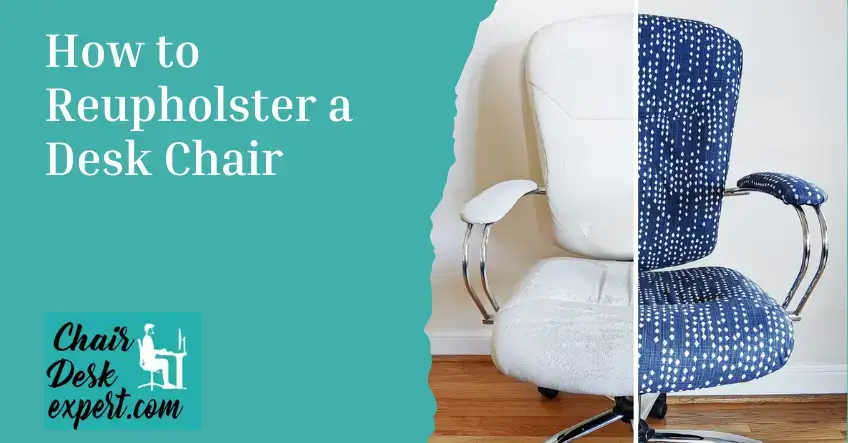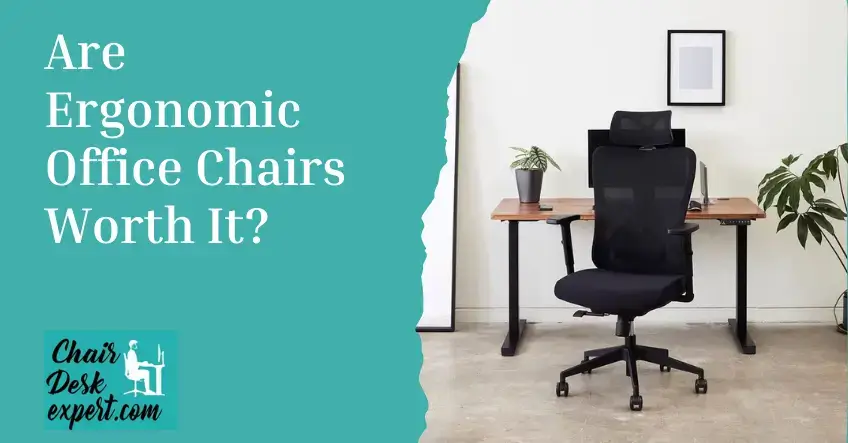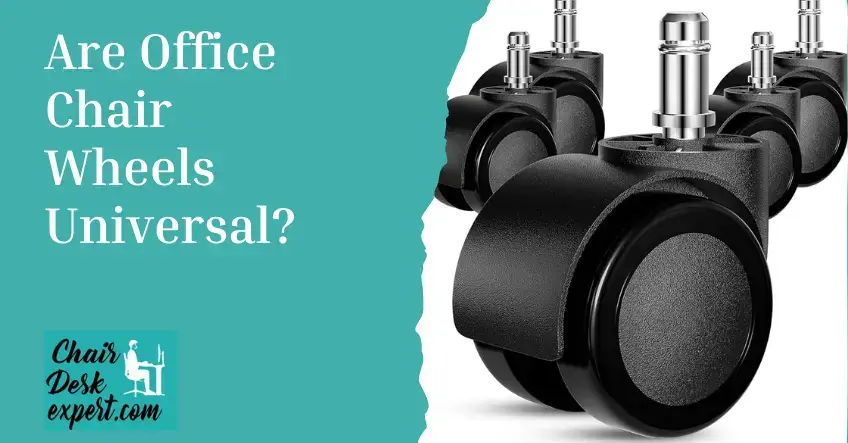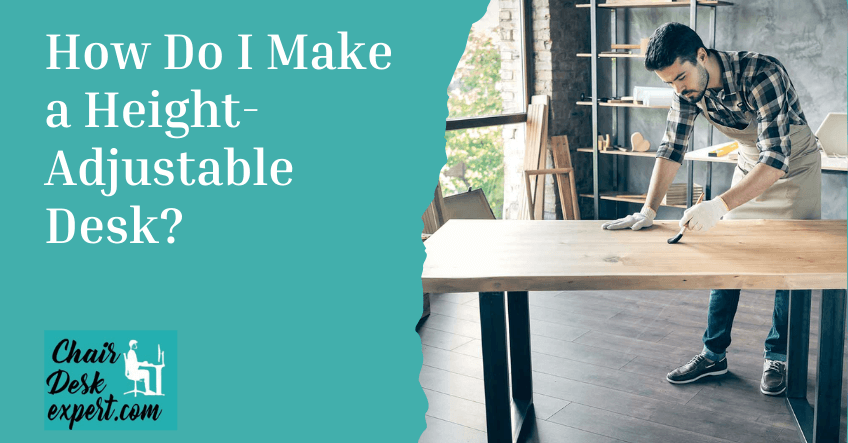Have you ever considered that sitting can cause leg pain? Even though activities such as jogging or cycling are typically associated with leg discomfort, prolonged sitting can also contribute to musculoskeletal problems and leg discomfort, as well as other health problems such as heart disease, diabetes, and obesity.
In this paper, we will explore why spending long hours in an office chair may cause leg pain and find effective measures to mitigate and prevent it.
Let us now see what happens when a person sits for a long time and how to deal with the pains in the legs when sitting related to sedentary workstations.
Let’s Start Exploring: Why Do I Have Leg Pain From Sitting in My Office Chair?
Why Does My Office Chair Give Me Leg Pain After Sitting Reasons to Consider!
The main reason for leg pain from sitting in an office chair is probably because it doesn’t meet your body’s ergonomic requirements.
For instance, if it is too hard, then not only do you get an uncomfortable feeling in your buttocks, but you also end up shifting your weight off your feet, which should be supporting you comfortably when sitting.
This shift could result in reduced circulation in the lower legs, possibly leading to atrophy of muscles by way of no active use.
Consequently, when standing up and walking around after a long time spent sitting down, your leg muscles have more work done on them.
>> Read Also This: How To Make Your Office Chair The Right Height!
Can Poor Sitting Posture Cause Leg Pain?
Yes, indeed; poor posture while seated results in aching legs after sitting for long hours in an office chair. Correct seated postures imply having one’s backrest in contact with the chair, giving appropriate back support for the spine, arms resting parallelly from the desk surface, and hips aligning above the knees. Additionally, make sure that both feet touch the floor while seated.
Failure to maintain this ideal pose would lead to experiencing some bodily aches, like pressing legs together while seated, which would increase vein compression, possibly leading to vein damage with time; hence, conditions like deep vein thrombosis, which causes blood clots in calves/feet.
Consistent use of good ergonomic practices and an office chair designed to promote proper body alignment can help ease and prevent leg pain caused by sitting for long hours in the workplace.
On average, we spend 9.3 hours a day sitting down, more time than many of us, like sleeping overnight, according to Southern Cross Insurance, due to sedentary jobs and the convenience of TV streaming services.
In addition to our general health and physical activity guidelines for exercise, as well as other aspects of our lives that suffer from protracted sitting, it hurts foot and leg health in particular.
Lack of Chair Support:
Several ordinary ergonomically designed office chairs lack the necessary adjustments and designs to fully support your pelvic area and legs.
Consequently, this may cause increased discomfort at the backside of the thighs and calf muscles due to wrong support and misalignment.
>> Read Also This: Where Should Lumbar Support Be on The Office Chair?
Sciatica:
This is lower back pain radiating into the leg resulting from compression or irritation of the sciatic nerve.
Piriformis Syndrome:
It happens when the piriformis muscle behind the buttocks compresses on a sciatic nerve, causing leg pain while seated.
In both cases, like sciatica syndrome or piriformis, it could be experienced sharp-shooting-burning sensations run down the legs that intensify with longer sitting.
Apart from nervous problems, there are other reasons why legs hurt when sitting, such as:
Poor Circulation:
Inadequate blood supply to the legs brought about by health issues like varicose veins and peripheral artery disease would make one uncomfortable or cause pain whilst seated.
Muscle Overuse or Strain:
Sitting over an extended period in an uncomfortable position or not a supportive chair may stress the muscles of the legs, causing discomfort/pain.
>> Read Also This: Ergonomic Office Chair For Sciatica
The Effect of Sitting on Our Body
When we sit down, pressure is exerted on muscles, bones, and joints unnaturally. This pressure affects not only our spine but also our legs and feet.
Compared to standing up, sitting increases the pressure on the intervertebral discs in our back by 140%, while slumping forward can raise this pressure to 190%.
It’s no wonder many people are tired when they get home from work and experience back pain.
While you are seated: Why your legs hurt so bad
Extreme venous insufficiency may be indicated by leg pain during long periods of sitting owing to permanent sedentary posture.
Venous insufficiency occurs when veins have difficulty moving blood efficiently through the lower limbs toward the heart, especially without any physical activity, which often helps enhance blood flow.
As such, blood can accumulate within the legs and feet, causing pain and swelling usually described by individuals who feel their calves are burning or having cramps.
Weakness Due To Prolonged Sitting
Large leg muscles and buttocks may become weak and wasted from extended periods of sitting, which are vital for walking and maintaining daily balance. This makes it easy to fall or sprain themselves while exercising if they have weaker muscles.
>> Read Also This: Replacing a Gas Lift in An Office Chair
How Long is Too Much Sitting?
Studies have shown that prolonged sitting for more than four hours a day increases the risk of cardiovascular diseases, diabetes, and other obesity-related conditions.
Sedentary jobs with poor movement breaks may lead to foot and leg pain because of lower physical activity levels, weak muscle strength or circulatory problems.
To reduce leg pain and improve general wellness, it’s crucial to have regular movement breaks during the day and find ways to minimize extended sitting during work.
Office Chair that causes Leg Pain
The simple fact is this: not all office chairs are designed to offer optimal comfort. Some office chairs may only aggravate the already discomforting condition of leg pain. In this post, we will discuss how poor adequacy of a given office chair regarding leg pain can hinge on the specific features and adjustments. Thanks to understanding these particulars, you can make correct decisions and modify your chair to eliminate pain and discomfort caused by the bad design of a chair.
Inability to adjust the height of the chair’s seat
Adjust the chair to lessen back pain! One of the main impediments to the provision of comfort in the office is the lack of a way to adjust the height of the seat of the office chair used in the o. Most people, when sitting down, tend to squat and end up down a chair when there are
If a chair Has no adjustable seat, it creates awkward leg placement, resulting in ligament and muscle strain on the leg. Making sure your feet are flat on the table, and your knees are at right angles to your body is essential. For instance, try seeking a position where the bar chair is low while loading the keyboards on your lap.
Insufficient Seat Cushion Depth
And remember the pillow! The seat cover system’s importance in preventing body pain is one of the advanced improvements of seat cushions.
Sitting in poorly padded chairs or chairs fitted with rigid materials such as mesh fabric raises the pressure on your legs, causing pain or sometimes even tingling of the legs. Conventional office chairs have broad cushions prone to straining your legs.
Limited Seat Depth and Width
All those chairs with fixed seat depth and width can also cause leg pain by stressing the joints. If the seat is intense, it may cut into the back of your knees, limiting blood flow and thus causing discomfort. Alternatively, if a seat is narrow, the hips tend to get cramped; hence, a similar feeling of pressure is created, which will numb your thigh area. Instead, choose a chair that can adequately modify the seat size to fit your body.
Preventing Leg Pain When Sitting in Your Desk Chair
These are some tips on relieving current pain as well as preventing future discomfort:
Change your chair:
If you suspect that your present chair causes you this ache in the legs, get another one. You should look out for an office chair with an adjustable seat height plus armrests, making sure that your feet can rest flat on the floor while keeping your arms parallel to the top of your desk.
The best chair would have sufficient back support and lumbar support that can be modified accordingly, and it rotates 360 degrees around so that you don’t slouch when trying to turn.
Control Your Posture:
Sit appropriately so that no irregularities would result in muscle imbalance, thereby causing pain. Avoid these habits, which make the muscles weak and cause discomfort upon standing up and walking, such as keeping one leg over another for an extended period leaning on any side.
>> Read Also This: Find Your Fit: Essential Guide to Office Chair Sizes
Get Advice from a Physiotherapist:
Your pain may be caused by the following factors: wrong sitting posture, an unsuitable chair and inflammation resulting from muscle overuse.
As shown in this study, lumbar support chairs and tilting the seat pan did help improve spinal postures. Still, it could not significantly counteract sitting-induced pain in a large group of participating individuals. Over 39% of the pain developers who fall under this category reported suffering more pain than before, even with the improved posture.
This means that some ergonomic changes that improve posture are possible, but such changes will not prevent all sitting-associated chronic pain. Further studies in the future should seek to address individuals with more incredible sitting-induced pain and not blanket the same approaches on all users.
How Can One Control Discomfort Arising from Sitting for Long Hours
If your or some of the retiree’s professional undertaking is not striving, you cannot help but accept that there are prevented or treated risks of pain caused by remaining seated for a prolonged duration of time. Here, in any case, are some recommendations about how to do it more efficiently.
Do Exercise
As much chronic pain arises from muscle tightness, adding stretching and strength training to one’s daily routine eliminates many harmful effects of sitting. A pain management specialist will guide you in ascertaining the stretching and exercises you will benefit from. The usually encouraged muscle stretch would involve tight ones such as the chest, hamstrings, and hip flexors, while areas like the core, upper back, shoulders, and quadriceps are encouraged to be strengthened.
Ergonomics
This is simply the arrangement of your workplace. A desk is instrumental in managing pain both when working and when not working. Easing pain can be done through proper ergonomics. Follow these simple & smart moves:
Monitor Height: Level your monitor with your eye while looking directly into your screen’s face. There is no need to enforce this particular height even though the monitor may be placed almost anywhere.
Elbow Position: When using the keyboard and mouse, bend your elbow 90 degrees or more. If not, level the height of the desk or position the keyboard and mouse on a tray.
Foot Position: Straighten the feet and ensure that both are flat on the ground, with the knees well tucked in at over 90o. The thighs in this position will naturally tilt downward toward the knees. You may need to change the chair’s height or get a footstool.
Change Work Habits
In case you notice that you are seated for a few hours without taking any step in the process, the following will assist you:
Use a Standing Desk: If available, incorporate a standing desk or a desk riser to shift from sitting all day to switching between the two positions during the day. Standing for even a few hours outside of the day avoids sitting pain and enhances flexibility.
Take Breaks: If, however, a standing desk cannot be, then come out for a while every 20-30 minutes. A quick walk to a coffee maker or even somebody stretching can be helpful this way. Every 30 minutes, when individuals are seated, they should get up and avoid sitting for about 5 minutes to stand, walk, or stretch.
Switch Up Lunch: Do not remain at one’s desk to have lunch. To be in motion and flexible, one must walk to other areas, for instance, go outside, change tables, or take a walk.
The research indicates the positive effects, especially in the back, neck, and shoulders, by alternating between sitting, half sitting, and standing activities during the work. Although their use was reported by participants during the experiments, the majority of the respondents did not want to use such postures for their other than working everyday activities, and all were in support of the modern adjustable furniture.
The above reports bolster the idea that moving away from the more static postures and incorporating a variety of working positions may help relieve discomfort and prevent future prevalence concerns. However, this hypothesis requires testing over time to determine whether this is the case and what the actual benefits of the individual base posture are.
Sitting for longer durations while in an office chair is likely to give rise to some leg problems because blood circulation will be poor. Sometimes, it can also mean not just sitting on the chair. Still, there is the act of sitting uncomfortably, usually involving too much weight on the butt and sadly not any adjusting, forcing over the blood flow to the legs leading them to possibly swell with blood which will, in the end, become painful or other problems like deep vein thrombus.
Final Verdict
Why Do I Have Leg Pain From Sitting in My Office Chair? There are various causes of leg pain while sitting in an office chair; these include bad posture, sitting motionlessly for long periods, inappropriate chair dimensions, and poor health.
Change your ergonomics at your workstation, take intervals to stretch and move around, and seek medical guidance if the pain continues or worsens.
This way, you can relieve leg aches and ensure you enjoy good health even when working at a desk.
FAQs!
How do I stop my legs from hurting when I sit?
To relieve leg pain while sitting, here are some suggestions:
Breaks and stretches: Stand up every thirty minutes, then stretch your leg muscles for better blood flow and less strain.
Footrest: Make sure to have both feet well supported and thighs flat.
How do you get rid of lower leg pain fast?
The following remedies may help if you have sudden lower leg muscle pain caused by overuse or cramps:
- Rest: Do not use it if it gets worse when you do.
- Leg elevation: Put your feet up higher than the rest of your body
- Cold compresses: To reduce swelling on your ankle, apply ice packs that will relieve pain.
- Stretching and massaging: Carefully move these muscles through massage.
- Non-prescription medications: Take over-the-counter drugs such as Tylenol (acetaminophen), Advil, or Motrin (ibuprofen).
What is the best posture for legs when sitting?
Adopt this position while sitting down for an ideal leg feel;
Feet flat on the floor: Keep both feet grounded without tucking them below chairs.
Wide knees and ankles: Ensure both knees are spaced far away while the ankles are distanced apart.
Chair adjustment: Adjust your chair so your knees remain below your thighs, allowing a more significant gap in your upper legs and lower trunk.
Why can’t I sit down without pain?
Various conditions can make sitting unbearable, for example, ischial tuberosity pain, myofascial pain syndrome, coccyx pain(coccydynia), failed back surgery, arachnoiditis, sciatica, and general backache.
A person with a chronic low back pain case may have to experience lots of difficulties sitting down because it would be too painful or uncomfortable.
References:
- Hicks, Brandon L., Jason C. Lam, and Matthew Varacallo. “Piriformis syndrome.” (2017).
- Papadopoulos, Elias C., and Safdar N. Khan. “Piriformis syndrome and low back pain: a new classification and review of the literature.” Orthopedic Clinics 35.1 (2004): 65-71.
- Singh, Usham Shyamkesho, et al. “Prevalence of piriformis syndrome among the cases of low back/buttock pain with sciatica: A prospective study.” Journal of Medical Society 27.2 (2013): 94.









